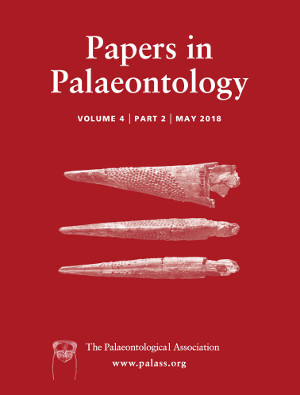Reg. Charity No. 1168330

The Ya Ha Tinda Lagerstätte from Alberta, Canada, is the first Jurassic marine Konservat‐Lagerstätte from North America and hosts a substantial collection of exceptionally preserved fossil Vampyropoda specimens. Vampyropods are soft‐bodied cephalopods (coleoids) characterized by eight arms and an internalized chitinous shell (gladius). Due to their lack of hard parts, Vampyropoda have a fragmentary fossil record, largely limited to exceptional Lagerstätten deposits. Excavations at Ya Ha Tinda have uncovered 16 vampyropod fossils from Pliensbachian and Toarcian strata, making it the largest deposit of Vampyropoda found outside the Tethys Ocean (Europe and the Middle East) for the Jurassic. Here, we present a taxonomic analysis of the Ya Ha Tinda Vampyropoda specimens and the first comprehensive study of Jurassic vampyropods from North America. In total, 14 specimens have sufficient details preserved on the gladius for taxonomic description. Two specimens are identifiable only to the suborder Loligosepiina (one to the family Geopeltidae), while the remaining specimens are identified to the genus level: six Paraplesioteuthis, three Loligosepia, one Geopeltis, one Parabelopeltis and one Jeletzkyteuthis. The discovery of Loligosepia cf. aalensis within Pliensbachian strata pushes back the earliest occurrence of this taxon from the early Toarcian to the late Pliensbachian. With the exception of Paraplesioteuthis, this is the first time these genera have been found outside of Europe for the Jurassic; therefore, this study significantly expands their palaeogeographical range. Furthermore, with established high‐resolution bio‐ and chemostratigraphy, specimens can be assigned to ammonite zones and placed in the context of the global Toarcian Oceanic Anoxic Event.